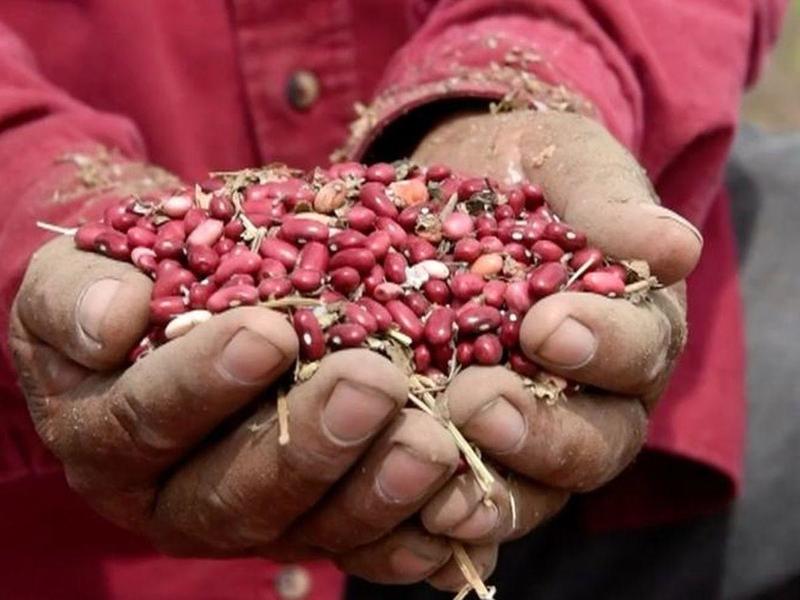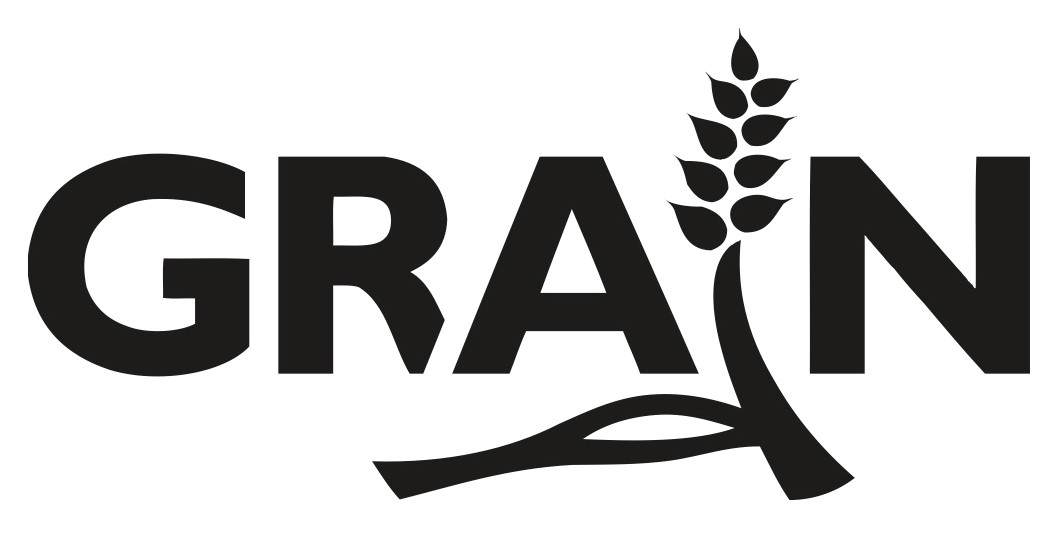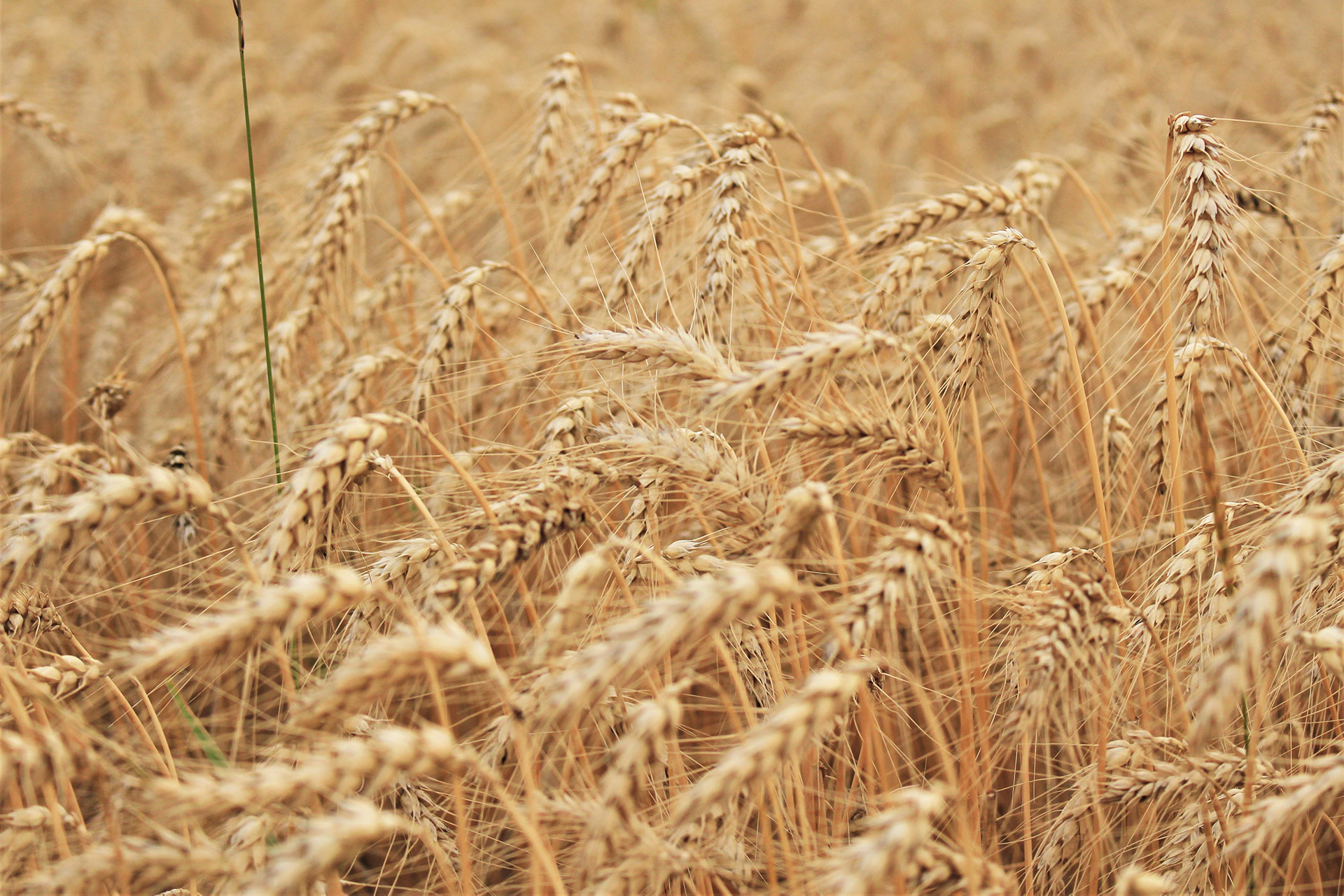Any
food made from wheat, rice, oats,
cornmeal, barley, or another cereal grain is a grain product. Bread,
pasta, breakfast cereals, grits, and tortillas are examples of grain products.
Foods such as popcorn, rice, and oatmeal are also included in the Grains Group.

Choose whole grains instead of refined grains
Whole grains offer a “complete package” of health benefits,
unlike refined grains, which are stripped of valuable nutrients in the refining
process.
Whole Grains and Disease
As researchers have begun to look more closely at carbohydrates and health, they are learning that the quality of the carbohydrates you eat is at least as important as the quantity. Most studies, including some from several different Harvard teams, show a connection between whole grains and better health.

TYPES OF GRAINS
Grains,
commonly referred to as ‘cereals’ or ‘cereal grains’, are the edible seeds of
specific grasses belonging to the Poaceae (also known as Gramineae) family.
Wheat, oats and rice are the grains most commonly eaten in Australia, with
others such as rye, barley, corn, triticale, millet and sorghum making a
smaller contribution. Some types of wheat such as spelt, freekeh, emmer and
eikorn are also becoming more popular
·
TEFF
·
WHEAT
·
OATS
·
RICE
·
CORN
·
BARLEY
·
SORGHUM
·
RYE
·
MILLET
·
TRITICALE
·
AMARANTH
· BUCKWHEAT
· BULGUR
TEFF
NUTRITION INFORMATION
·
Gluten free
· Contains high levels of
calcium, phosphorus, iron, copper, aluminum, barium and thiamine
·
Good source of essential
fatty acids
·
Good source of
phytochemicals such as polyphenols and phytates
· High in resistant starch, which feed beneficial bacteria in the microbiome
CULINARY USES OF TEFF
· Mainly used to make
injure, a traditional Ethiopian bread. Finely ground grains are slightly
fermented, then made into a savory flat bread, which is described as soft and
porous.
·
Can also be used to make
porridge and traditional alcoholic beverages
WHEAT
· Spelt is higher in protein
than common wheat and can be used in place of common wheat in most recipes.
Spelt does contain gluten and should not be consumed by people who need to
avoid gluten as a consequence of medically diagnosed coeliac disease.
· Emmer, otherwise known as
‘farro’ or ‘grano farro’, is staging a comeback as a gourmet ingredient, with
good amounts of antioxidants.
· Einkorn is prized for having a
high protein content and the highest level of lutein among wheat species.
·
Kamut is an heirloom grain
originating from Egypt which is higher in protein and contains more vitamin E
than common wheat.
NUTRITION
CREDENTIALS OF WHOLE GRAIN WHEAT
·
Low in fat, most of
which is unsaturated.
·
High in carbohydrate
(mainly starch) and high in insoluble dietary fiber.
· Relatively high in
protein (11-13%) compared with other major grains and contains a protein
complex which forms gluten.
·
High in potassium and
low in sodium.
· Contains B-group
vitamins such as thiamin, riboflavin, niacin, vitamin B6 (pyridoxine), folate
and pantothenic acid.
·
Contains vitamin E.
MAIN CULINARY USES OF WHEAT
Wheat is typically
milled into flour which is then used to make a wide range of foods including
bread, crumpets, muffins, noodles, pasta, biscuits, cakes, pastries, cereal
bars, sweet and savoury snack foods, crackers, crisp-breads, sauces and
confectionery (e.g. liquor ice). Other culinary applications of wheat include:
· Wheat germ – can be added to
breads, pastries, cakes and biscuits or sprinkled onto yoghurt, breakfast
cereal or fruit dishes.
· Boiled wheat – puddings are made from
boiled wheat in Lebanon and the Balkans.
· Wheat starch – used as ‘corn flour’ or converted to glucose, dextrose and other sugars for use in confectionery and other manufactured foods.
OATS
NUTRITION
CREDENTIALS OF WHOLE GRAIN OATS
·
High in carbohydrates
(mainly starch).
·
The protein content is
higher than other cereals, at around 14%.
· High in soluble dietary
fiber, specifically beta-glucan found mainly in the aleurone and subaleurone
layers.
· The fat content is the
highest of all grains (7-8%), with fat contained in the endosperm and the germ.
The fat is mostly unsaturated.
·
High in potassium and
low in sodium.
· Contains B-group
vitamins such as thiamin, riboflavin, niacin, vitamin B6 (pyridoxine), folate
and pantothenic acid.
·
Contains vitamin E.
· Contains iron, zinc,
magnesium, phosphorus and selenium (depending on the soil content of selenium).
·
Contains small amounts
of copper, manganese and calcium.
RICE
Rice is grown in over
100 countries and is a grain eaten by more people in the world than any other
grain. In fact, three of the most populated regions of the world, China, India
and Indonesia, are all rice based societies and it is their staple food.
·
Low GI White Rice (formerly known
as Doongara rice or clever rice) – a long grain rice that’s uniquely developed and
grown in Australia, with the benefit of having a lower glycemic index
(GI) than regular rice.
· Basmati rice – a very long, slim
grain, which is very popular in Indian cuisine and often served alongside curry
based dishes. It also has a lower GI than regular rice.
· Jasmine rice – a very fragrant
rice and originates from Thailand where it is used extensively in cooking,
usually steamed.
· Arborio rice – a much shorter and
plump grain, it is typically used in Italian dishes like risotto.
· Brown rice – a rice grain with the bran layer still intact. It can be cooked and eaten as it is and contains more nutrients in this form than white rice, which has had the outer bran layer and germ removed.
NUTRITION CREDENTIALS OF WHOLE GRAIN RICE
·
Around 85% of the energy
in rice comes from carbohydrate.
·
After carbohydrate,
protein is the second most abundant constituent of rice.
·
Low in fat, with the
small amount being mostly unsaturated.
·
Rice bran is high in
insoluble dietary fiber.
· Contains B-group
vitamins such as thiamin, riboflavin, niacin, vitamin B6 (pyridoxine), folate
and pantothenic acid.
·
Contains vitamin E.
·
Contains iron, zinc,
magnesium, phosphorus and selenium (depending on the soil content
of selenium).
·
Contains small amounts
of copper, manganese and calcium.
·
High in potassium and
low in sodium.
·
1 cup of cooked brown
rice contains 1278kJ, 3g fiber, 5.8g protein, 1.8mg zinc and 98mg magnesium.
MAIN CULINARY
USES OF RICE
Rice is used to create
an array of ingredients for culinary uses. For example:
·
Puffed rice – is used in
breakfast cereals, snacks bars and rice cakes.
·
Rice flour – is used to make rice
crackers and rice noodles.
· Rice bran – is used as an
ingredient in some baked products, such as bread. It is also available to
purchase as a single ingredient to sprinkle on breakfast cereals and use in
recipes.
· Rice bran oil – is domestically
available to use for baking and cooking purposes, including pan frying, stir
frying and deep frying. Rice bran oil spread is also available to spread on
sandwiches and use in baking and pan-frying.
CORN
Corn (also known as
maize), is one of the sweetest tasting grains. In its immature form it is
the familiar yellow corn on the cob. When it matures and dries out it is used
like other grains to make grain foods like breakfast cereal and tortillas.
NUTRITION CREDENTIALS OF WHOLE GRAIN CORN
·
High in carbohydrate
(mainly starch) and dietary fiber.
·
Higher in fat (4-5%)
compared to other grains, with the fat being mostly unsaturated.
·
Generally lower in
protein (around 9%) and has a lower vitamin and mineral content than other
grains.
·
High in potassium and
low in sodium.
· Contains B-group
vitamins such as thiamin, riboflavin, niacin, vitamin B6 (pyridoxine), folate
and pantothenic acid.
·
Contains vitamin E.
·
Yellow corn contains
beta-carotene.
·
Gluten free.
MAIN CULINARY USES OF CORN
·
Fresh corn – is frequently
eaten as a vegetable (sweetcorn), which is steamed or boiled after dehusking.
It is also available to eat frozen and canned, either whole or as single corn
kernels.
·
Corn flour – the corn flour
sold in the supermarket is in fact corn starch. It is used as a thickener in
custard powders, dessert mixes and sauces. Different types of corn flour
(cornstarch) are put to a variety of uses e.g. corn flour with a high
amylopectin content is used as a starch thickener, while that with a high
amylose content is ideal for the production of extruded products.
·
Popcorn – is made from a
corn variety which has a very tough outer covering so that it “explodes” when
heated.
BARLEY
Barley is a cereal grain that was originally native to Asia. Barley was very important in ancient times and was one of the first grains to be widely cultivated. However, when leavened bread became popular, consumption of barley was replaced by wheat and rye. Having a lower gluten content (which provides the framework for dough to rise), the application of barley in the production of bread is limited. As such, fewer people today in developed countries eat barley. Although, the discovery that barley is high in beta-glucan has given rise to its use in health-promoting food products, especially foods tailored to cardiovascular health.
NUTRITION CREDENTIALS OF WHOLE GRAIN BARLEY
·
Low in fat (which is
mostly unsaturated) and high in carbohydrate (mainly starch).
· Moderate protein content
(10%) and contains a protein complex which forms gluten (although a smaller
amount than wheat).
· High in soluble fiber,
specifically beta-glucan, which is found in the endosperm and aleurone cell
walls.
·
Has a low glycemic index
(GI) to assist blood glucose control.
·
High in potassium and
low in sodium.
·
Contains vitamin E.
·
Contains small amounts
of copper, manganese and calcium.
MAIN CULINARY USES OF BARLEY
·
Pearled barley – is made by
removing the two outer layers. Pearled barley is generally used in soups and
casseroles or as a side dish (kasha).
·
Scotch barley – is a husked grain
which has been roughly ground is used in soups and stews.
· Malted barley – is used in the production of alcoholic beverages such as beer and whisky and as a flavoring agent for cereal breakfast foods and for malted milk.
SORGHUM
Sorghum is related to
sugar cane and to millet and is called ‘Great Millet’ in some areas of West
Africa. It is an important staple food of the upland, drier parts of Africa and
India where no other cereal can successfully be raised. Sorghum is able to grow
in soils that are quite poorly nourished, with an unreliable water supply.
NUTRITION CREDENTIALS OF WHOLEGRAIN SORGHUM
·
Rich in carbohydrates
(mainly starch).
·
Moderate protein
content, but low in lysine.
·
Low in fat, most of
which is unsaturated.
·
A good source of dietary
fiber.
·
High in potassium and
low in sodium.
·
Gluten free.
·
Such as thiamin,
riboflavin, niacin, vitamin B6 (pyridoxine), folate and pantothenic acid.
· Contains vitamin E.
MAIN CULINARY USES OF SORGHUM
· Sorghum flour – in India and the
West Indies, sorghum meal is used to make chapattis and similar unleavened
bread.
· Sorghum grains – are more recently
being used in some multi-grain products, including breakfast cereals and bars
or can be boiled whole and eaten like rice. It is also used in a variety of
traditional foods world-wide including breads, porridges, steamed products,
boiled products, beverages and snack foods
RYE
Scandinavian countries such as Denmark, Norway and Sweden eat a variety of bread and crispbreads made from rye flour, although wheat products are becoming more popular.
NUTRITION CREDENTIALS OF WHOLE GRAIN RYE
·
High in carbohydrate
(mainly starch), with a lower GI than most other grains.
· Relatively high protein
content (around 15%), with a higher lysine content than most other cereals.
·
Contains a protein
complex which forms gluten.
·
Low in fat (most of
which is unsaturated).
·
High in potassium and
low in sodium.
·
Excellent source of
dietary fiber.
· Contains B-group
vitamins such as thiamin, riboflavin, niacin, vitamin B6 (pyridoxine), folate
and pantothenic acid.
·
Contains vitamin E.
MAIN CULINARY USES OF RYE
·
Rye flour – dark rye flour is
made from the whole grain and light rye flour from partially deranged grain and
has a stronger flavor than wheat. Light, medium and dark rye flours are used to
make bread, biscuits like gingerbread, pancakes and Scandinavian rye
crispbreads. Rye flour is also used as a filler for sauces and soups.
·
Alcoholic beverages – rye is used for
distilling alcohols such as gin, whisky and beer.
MILLET
NUTRITION CREDENTIALS OF WHOLE GRAIN MILLET
·
Low in fat (which is mostly unsaturated) and high in carbohydrate (mainly
starch).
·
A good source of dietary fiber.
·
High in potassium and low in sodium.
·
Gluten free.
· Contains B-group vitamins such as thiamin, riboflavin, niacin, vitamin B6
(pyridoxine), folate and pantothenic acid
·
Contains vitamin E.
MAIN CULINARY USES OF MILLET
· Millet flour – millet can be ground into a coarse flour which lacks gluten. It is used to make porridge (e.g. in South Africa) and in India and the West Indies, millet meal is used to make chapatis and similar unleavened bread. In Australia millet flour is added to baked foods to provide texture and flavor.
TRITICALE
Triticale is a cereal
grain created by plant breeders. In the 1950s, plant geneticists hoped that a
cross fertilization of wheat and rye would produce a cereal with superior
yield. The hardiness and disease resistance of rye was combined with the
milling and baking qualities of wheat.
NUTRITION CREDENTIALS OF WHOLE GRAIN TRITICALE
·
Similar to wheat, with
13% protein, but lower in lysine and niacin.
·
Lower in protein complex
which forms gluten.
·
A good source of phosphorus
and magnesium and a very good source of manganese.
·
Contains B-group
vitamins, most notably thiamin and folate.
MAIN CULINARY USES OF TRITICALE
· Triticale flour – can be used to
make biscuits, rye-type crispbreads, cakes and muffins. The flavour and texture
of breads made from triticale are similar to that of light rye bread.
· Triticale flakes – whole grain triticale
is pressed and rolled, which than may be used like rolled oats to make a hot
breakfast cereal or substituted for rolled oats in recipes (e.g. in cookies and
muffins).
AMARANTH
NUTRITION CREDENTIALS OF AMARANTH
· High protein content
(13-14%) and a carrier of lysine, an amino acid that’s missing or negligible in
many other grains.
· Consists of 6 to 9% of
oil which is higher than most other cereals. Amaranth oil contains
approximately 77% unsaturated fatty acids and is high in linoleic acid.
·
High in dietary fiber.
·
Gluten free.
·
High in iron, magnesium,
phosphorus, potassium and appreciable amounts of calcium.
· A rich dietary source of phytosterols, with cholesterol-lowering properties.
MAIN CULINARY
USES OF AMARANTH
· Amaranth flour – 100% amaranth
flour may be used in any recipe that doesn’t require gluten to rise like
pancakes, biscuits, flat breads, and pastas. Non-gluten flours like amaranth
will not rise in yeast breads, so amaranth flour can only be substituted for
about 30% of the gluten containing flour you choose wheat, rye etc.
· Whole raw amaranth seed – can be boiled for 20
minutes to create a gluten free version of porridge.
· Amaranth flakes – can be mixed with
other cereal grains or added to baked goods, cereal bars and desserts.
·
Sprouted amaranth – goes well in
salads or cereals.
BUCKWHEAT
Not belonging to the
Poaceae botanical family, buckwheat is not classified as a ‘true’ grain, but
rather a ‘pseudo-cereal’. Its nutritional profile, nutty flavour, appearance
and culinary applications have led it to be commonly referred to as a grain.
NUTRITION CREDENTIALS OF BUCKWHEAT
·
High in protein (13-15%), second highest only to oats, and rich in the
amino acid lysine.
·
Rich in carbohydrates (mainly starch).
·
Rich in polyunsaturated essential fatty acids, such as linoleic acid.
·
Contains vitamins B1, C and E.
·
Contains higher levels of zinc, copper, and manganese than other cereal
grains, and the bioavailability of these minerals is also quite high.
·
High in soluble fiber.
·
A rich source of polyphenol compounds.
·
Gluten free.
MAIN CULINARY USES OF BUCKWHEAT
·
Buckwheat flour – may be used to make gluten free crepes and pancakes. Up to half the
rice, bean, sorghum or soy flour in gluten free recipes may be used to make
muffins, rolls, bread and cookies. Buckwheat flour also works well as a
thickener for sauces, soups and casseroles.
BULGUR
BULGUR NUTRITION
Bulgur is not only tasty and quick to prepare, but it’s also very
nutritious.
·
Calories: 151
·
Carbs: 34 grams
·
Protein: 6 grams
·
Fat: less than 1 gram
·
Fiber: 8 grams
·
Vitamin B6: 8% of the DV
·
Pantothenic acid: 13% of the DV
·
Manganese: 48% of the DV
·
Copper: 15% of the DV
·
Magnesium: 14% of the DV
·
Iron: 10% of the DV
·
Thiamine: 9% of the DV
·
Zinc: 9% of the DV
CULINARY USES
Coarse bulgur is used to make pottages, while
the medium and fine grains are used for breakfast cereals, salads such as kısır,
pilavs, breads, and in dessert puddings such as kheer. Bulgur porridge is
similar to frumenty, a cracked wheat porridge that was a staple of medieval
cuisine.





No comments:
Post a Comment